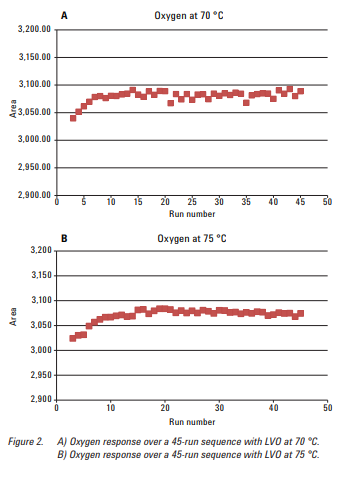Tips for Refinery Gas Analysis
Refinery gas analysis (RGA) is an important application in oil and gas which characterizes the gases produced during crude oil refining, including stack emission, flame and reformate streams.
The challenge in RGA analysis is the reliable analysis of variable sources and compositions of gases produced via fluid catalytic cracking (FCC). The analysis must be quick and accurate to allow engineers to monitor permanent gases, such as hydrogen, oxygen, nitrogen, carbon monoxide and carbon dioxide, saturated and unsaturated hydrocarbon content and sulfur contaminant as by-products of refinery operations.
Given the increase in helium cost over the past few years, there is growing interest across a range of applications that are relatively gas hungry, including RGA. Agilent Technologies have performed RGA using a large valve oven with a selection of different carrier gases and detectors and have noted some interesting results:
- Using a cool down ramp with a large valve oven will shorten the overall cycle time of fast RGA
- Oxygen was found to be more stable using an Isothermal oven at 75 ℃ than at 70 ℃
- Although hydrogenation of olefins has been reported when using hydrogen as carrier gas for RGA with a large valve oven, Agilent found no evidence of this when they ran a test sample
- Results for large valve oven based RGA with both hydrogen and nitrogen carrier gases were broadly similar, with detection of the last hydrocarbon at 5 minutes 12 seconds and 5 minutes 30 seconds respectively
- Hydrogen and nitrogen are suitable alternative carrier gases for large valve oven based RGA

Figure 2 from the 'Fast Refinery Gas Analysis System Based on the Agilent 7890B GC System and G3507A Large Valve Oven Using Micropacked Columns' Application Note demonstrates that oxygen is more stable using an Isothermal oven at 75 ℃ than at 70 ℃
It is important to note that although both hydrogen and nitrogen can be produced as a by-product of RGA, labs which are using hydrogen or nitrogen as a carrier gas for RGA should not simply recycle the by-product gases produced for this purpose. This is discouraged as the repeatability of results using the by-product gases cannot be guaranteed, due to their varying sources and contaminant levels producing inconsistent gas purity.
To produce repeatable results using hydrogen or nitrogen, it is advisable to produce the gases via a gas generator as then their purity and consistency can be guaranteed. As hydrogen and nitrogen can both be produced via a gas generator, unlike helium which is a finite resource and subject to market volatility, they are economical and sustainable gas solutions for refinery gas analysis carrier gas.
Found this article interesting? You may also like: